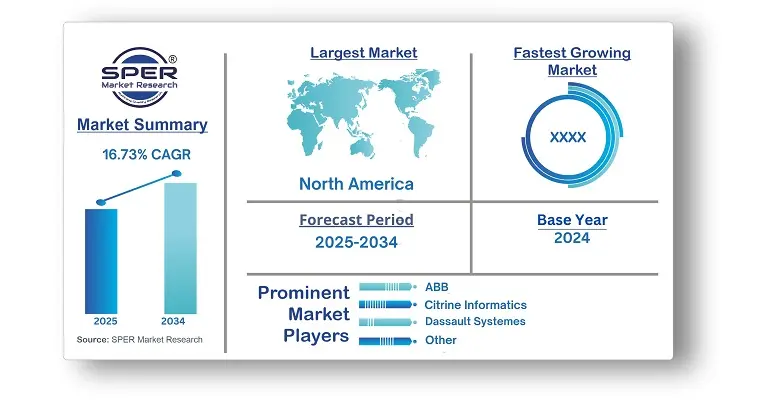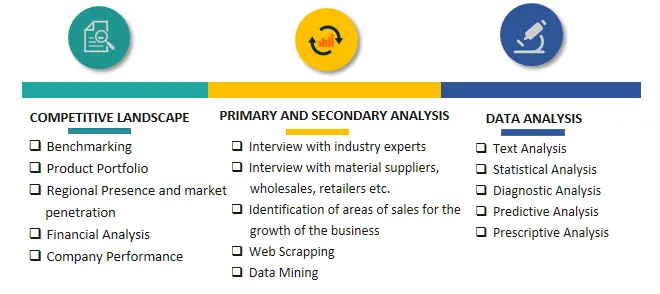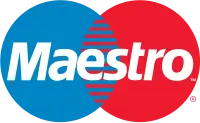
Material Informatics Market Share, Trends Analysis and Forecast 2034
Global Material Informatics Market Growth, Size, Trends Analysis - By Material Type, By Technology, By End-User - Regional Outlook, Competitive Strategies and Segment Forecast to 2034
| Published: Sep-2025 | Report ID: SEMI2569 | Pages: 1 - 221 | Formats*: |
| Category : Semiconductor and Electronics | |||


- In December 2024, Materials Design, Inc. (US) announced the release of MedeA 3.10, the most recent revision of its MedeA software suite. MedeA 3.10 offers a comprehensive suite of multiscale modelling capabilities, including sophisticated tools that allow researchers to analyse and create materials with unprecedented precision and efficiency.
- Hitachi High-Tech Corporation and Hitachi, Ltd. began a collaborative project with Taiwan's Industrial Technology Research Institute (ITRI) in May 2024 to integrate Hitachi's Materials Informatics solutions with ITRI's AI-enhanced "MACSiMUM" platform. The objective of the project is to accelerate the digital transformation of materials research and development.
- In November 2023, Citrine Informatics (US) finalized a definitive agreement with SPROUT Consulting (Germany) to assist potential customers in Europe. This collaboration aims to help organizations expedite the adoption of the Citrine Platform, a leader in chemicals and materials AI and smart data management, across various business units, thereby unlocking the full strategic value of utilizing this technology.
| Report Metric | Details |
| Market size available for years | 2021-2034 |
| Base year considered | 2024 |
| Forecast period | 2025-2034 |
| Segments covered | By Material Type, By Technology, By End-User |
| Regions covered | North America, Latin America, Asia-Pacific, Europe, and Middle East & Africa |
| Companies Covered | ABB, Citrine Informatics, Dassault Systemes, Elsevier, Hitachi High-Tech Corporation, International Business Machines Corporation, Lattice Technology, Inc, Microsoft, Phaseshift Technologies Inc, Schrodinger, Inc. |
- Global Material Informatics Market Size (FY’2021-FY’2034)
- Overview of Global Material Informatics Market
- Segmentation of Global Material Informatics Market By Material Type (Elements, Chemicals, Others)
- Segmentation of Global Material Informatics Market By Technology (Machine Learning, Deep Tensor, Statistical Analysis, Digital Annealer, Others)
- Segmentation of Global Material Informatics Market By End-User (Material Science, Chemical and Pharmaceutical, Electronics and Semiconductors, Automotive, Aerospace and Defense, Others)
- Statistical Snap of Global Material Informatics Market
- Expansion Analysis of Global Material Informatics Market
- Problems and Obstacles in Global Material Informatics Market
- Competitive Landscape in the Global Material Informatics Market
- Details on Current Investment in Global Material Informatics Market
- Competitive Analysis of Global Material Informatics Market
- Prominent Players in the Global Material Informatics Market
- SWOT Analysis of Global Material Informatics Market
- Global Material Informatics Market Future Outlook and Projections (FY’2025-FY’2034)
- Recommendations from Analyst
- 1.1. Scope of the report
- 1.2. Market segment analysis
- 2.1. Research data source
- 2.1.1. Secondary Data
- 2.1.2. Primary Data
- 2.1.3. SPERs internal database
- 2.1.4. Premium insight from KOLs
- 2.2. Market size estimation
- 2.2.1. Top-down and Bottom-up approach
- 2.3. Data triangulation
- 4.1. Driver, Restraint, Opportunity and Challenges analysis
- 4.1.1. Drivers
- 4.1.2. Restraints
- 4.1.3. Opportunities
- 4.1.4. Challenges
- 5.1. SWOT Analysis
- 5.1.1. Strengths
- 5.1.2. Weaknesses
- 5.1.3. Opportunities
- 5.1.4. Threats
- 5.2. PESTEL Analysis
- 5.2.1. Political Landscape
- 5.2.2. Economic Landscape
- 5.2.3. Social Landscape
- 5.2.4.Technological Landscape
- 5.2.5. Environmental Landscape
- 5.2.6. Legal Landscape
- 5.3. PORTERs Five Forces
- 5.3.1. Bargaining power of suppliers
- 5.3.2. Bargaining power of buyers
- 5.3.3. Threat of Substitute
- 5.3.4. Threat of new entrant
- 5.3.5. Competitive rivalry
- 5.4. Heat Map Analysis
- 6.1. Global Material Informatics Market Manufacturing Base Distribution, Sales Area, Product Type
- 6.2. Mergers & Acquisitions, Partnerships, Product Launch, and Collaboration in Global Material Informatics Market
- 7.1. Elements
- 7.2. Chemicals
- 7.3. Others
- 8.1. Machine Learning
- 8.2. Deep Tensor
- 8.3. Statistical Analysis
- 8.4. Digital Annealer
- 8.5. Others
- 9.1. Material Science
- 9.2. Chemical and Pharmaceutical
- 9.3. Electronics and Semiconductors
- 9.4. Automotive
- 9.5. Aerospace and Defense
- 9.6. Others
- 10.1. Global Material Informatics Market Size and Market Share
- 11.1. Asia-Pacific
- 11.1.1. Australia
- 11.1.2. China
- 11.1.3. India
- 11.1.4. Japan
- 11.1.5. South Korea
- 11.1.6. Rest of Asia-Pacific
- 11.2. Europe
- 11.2.1. France
- 11.2.2. Germany
- 11.2.3. Italy
- 11.2.4. Spain
- 11.2.5. United Kingdom
- 11.2.6. Rest of Europe
- 11.3. Middle East and Africa
- 11.3.1. Kingdom of Saudi Arabia
- 11.3.2. United Arab Emirates
- 11.3.3. Qatar
- 11.3.4. South Africa
- 11.3.5. Egypt
- 11.3.6. Morocco
- 11.3.7. Nigeria
- 11.3.8. Rest of Middle-East and Africa
- 11.4. North America
- 11.4.1. Canada
- 11.4.2. Mexico
- 11.4.3. United States
- 11.5. Latin America
- 11.5.1. Argentina
- 11.5.2. Brazil
- 11.5.3. Rest of Latin America
- 12.1. ABB
- 12.1.1. Company details
- 12.1.2. Financial outlook
- 12.1.3. Product summary
- 12.1.4. Recent developments
- 12.2. Citrine Informatics
- 12.2.1. Company details
- 12.2.2. Financial outlook
- 12.2.3. Product summary
- 12.2.4. Recent developments
- 12.3. Dassault Systèmes
- 12.3.1. Company details
- 12.3.2. Financial outlook
- 12.3.3. Product summary
- 12.3.4. Recent developments
- 12.4. Elsevier
- 12.4.1. Company details
- 12.4.2. Financial outlook
- 12.4.3. Product summary
- 12.4.4. Recent developments
- 12.5. Hitachi High-Tech Corporation
- 12.5.1. Company details
- 12.5.2. Financial outlook
- 12.5.3. Product summary
- 12.5.4. Recent developments
- 12.6. International Business Machines Corporation
- 12.6.1. Company details
- 12.6.2. Financial outlook
- 12.6.3. Product summary
- 12.6.4. Recent developments
- 12.7. Lattice Technology, Inc
- 12.7.1. Company details
- 12.7.2. Financial outlook
- 12.7.3. Product summary
- 12.7.4. Recent developments
- 12.8. Microsoft
- 12.8.1. Company details
- 12.8.2. Financial outlook
- 12.8.3. Product summary
- 12.8.4. Recent developments
- 12.9. Phaseshift Technologies Inc
- 12.9.1. Company details
- 12.9.2. Financial outlook
- 12.9.3. Product summary
- 12.9.4. Recent developments
- 12.10. Schrodinger, Inc
- 12.10.1. Company details
- 12.10.2. Financial outlook
- 12.10.3. Product summary
- 12.10.4. Recent developments
- 12.11. Others
SPER Market Research’s methodology uses great emphasis on primary research to ensure that the market intelligence insights are up to date, reliable and accurate. Primary interviews are done with players involved in each phase of a supply chain to analyze the market forecasting. The secondary research method is used to help you fully understand how the future markets and the spending patterns look likes.
The report is based on in-depth qualitative and quantitative analysis of the Product Market. The quantitative analysis involves the application of various projection and sampling techniques. The qualitative analysis involves primary interviews, surveys, and vendor briefings. The data gathered as a result of these processes are validated through experts opinion. Our research methodology entails an ideal mixture of primary and secondary initiatives.



Frequently Asked Questions About This Report
PLACE AN ORDER
Year End Discount
Sample Report
Pre-Purchase Inquiry
NEED CUSTOMIZATION?
Request CustomizationCALL OR EMAIL US
100% Secure Payment






Related Reports
Our Global Clients
Our data-driven insights have influenced the strategy of 200+ reputed companies across the globe.






















